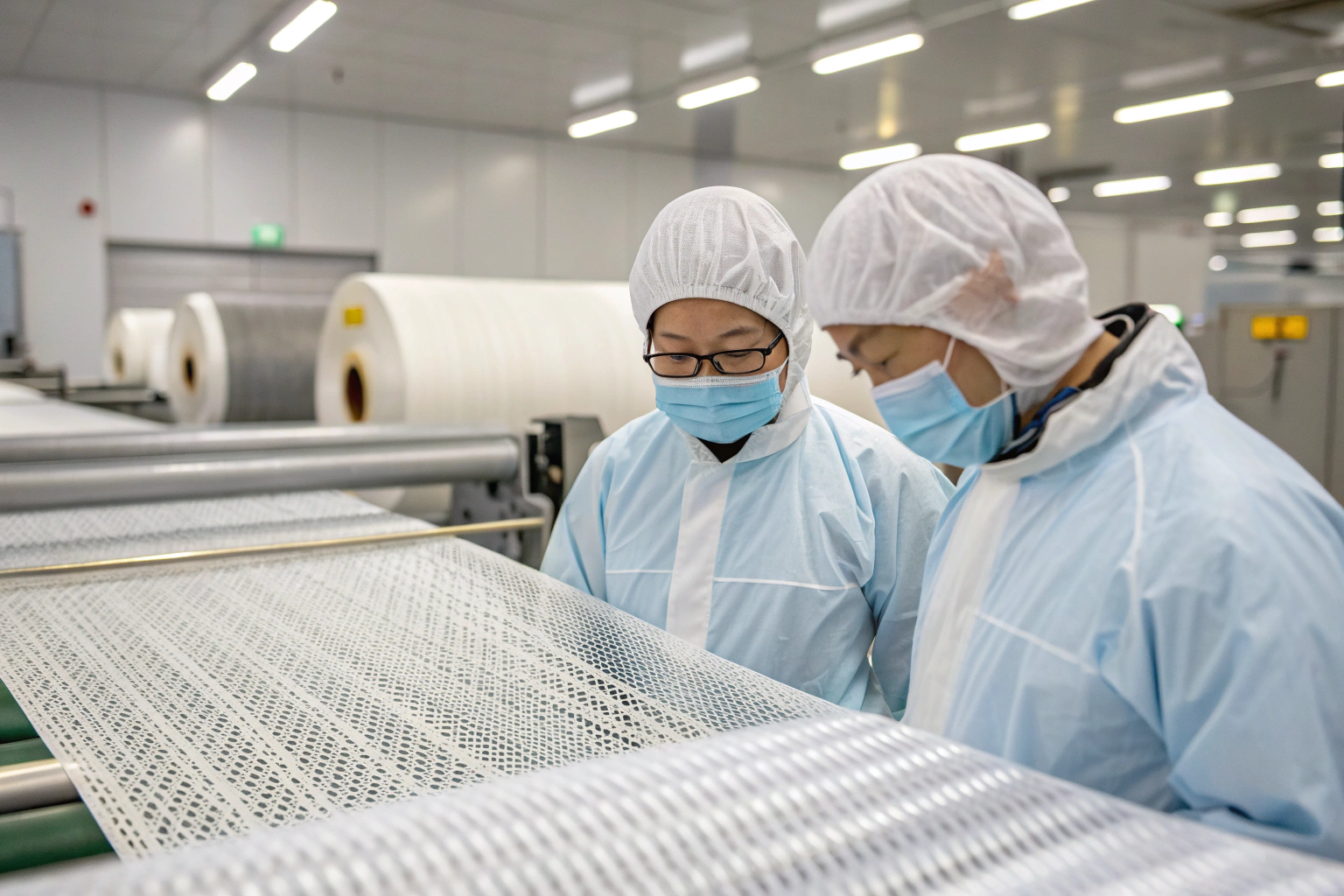Entering the medical implant textiles space can feel risky. I hear it from buyers every week. They face pressure from clinical teams, investors, and regulators. They worry about fake certificates and late shipments. They also fear recalls. I felt the same when I started to develop implant meshes and suturable fabrics. I made mistakes. I learned that a clear sourcing playbook reduces risk fast.
I built that playbook around one idea. The standard is the minimum, not the finish line. ISO 13485 keeps a quality system in shape. It does not design your fabric. It does not run your sterilization. It does not plan your supply chain. I run a full-stack textile operation in Keqiao. I use ISO 13485 as a base, then I add lab discipline, biocompatibility design, and logistics control. This mix protects your schedule and your budget.
You can source ISO 13485 certified medical implant textiles by verifying the certificate scope, auditing process controls, confirming biocompatibility per ISO 10993, and locking cleanroom and sterilization controls that match the device route to market. Then you finalize Incoterms, HS codes, and packaging that pass U.S. and EU customs without delays.
Most buyers stop after they see the certificate. That is not enough. The scope line and the change control log will tell you more than the stamp. In my team, we treat every certificate as a start. We then test, trace, and simulate the first shipment. We do this at sample stage, not after you pay deposits.
I now show you how to pick, test, and ship with less risk. I include what I do in our CNAS lab, what we ask from dyeing and coating partners, and how we run export documents for sterile cargo. Use this as your checklist. Share it with your compliance and logistics teams. It will save you weeks.
ISO 13485 for Implant Textiles: What to Check?
Many buyers see "ISO 13485" and think it is a green light. It is not. The scope matters. The audit cycle matters. The link to your device file matters. If you miss these points, you can pass a supplier audit yet fail at regulatory review. I learned this the hard way when a client’s Notified Body asked for line-by-line risk evidence. We had it, but only because we tracked it per lot.
You should review four items on day one: the certificate scope, the validity and issuing body, the audit findings and close-outs, and the mapping to risk management and traceability. These tell you if the system covers implant textiles and if it works in daily production.
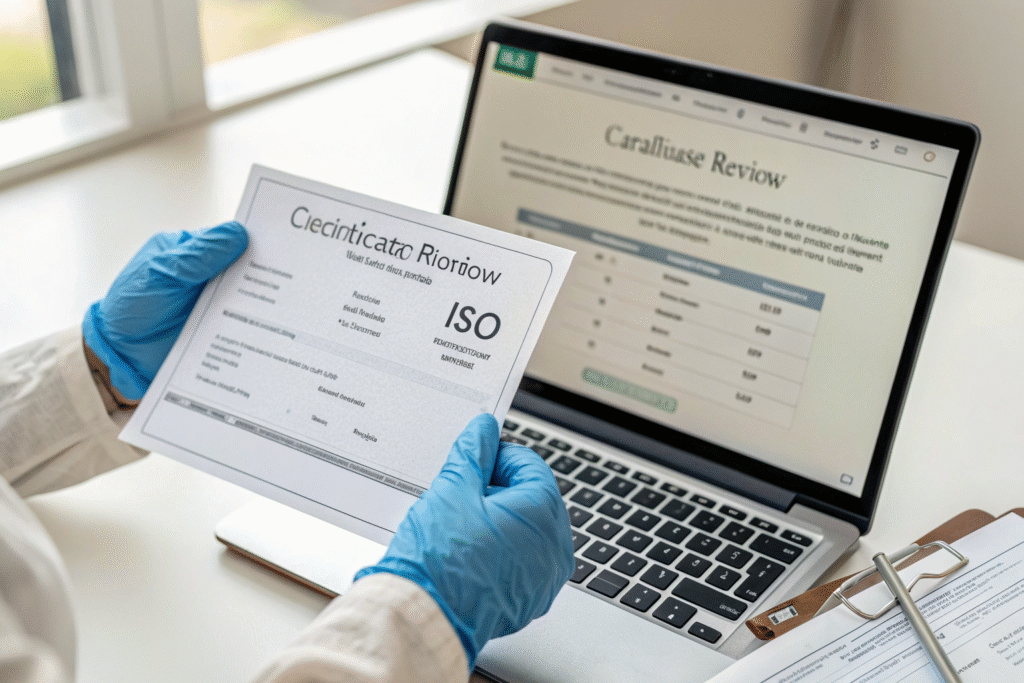
Does the certificate scope cover implant-grade textiles?
Scope lines must name implantable fabrics, meshes, or fabric components used in implants. A generic scope creates risk for EU MDR and U.S. submissions. Learn baseline scope rules on the ISO 13485 overview and check how scope ties to device files in the FDA QMSR resources.
How do I test the real traceability chain?
You can test with a mock recall. You pick a lab dip or pilot lot. You ask the supplier to trace raw yarn, weaving loom, finishing line, QA approvals, and final pack in under two hours. You also ask to see digital records. Good providers use QR codes and LIMS. See what regulators expect on EU MDR and general UDI rules at the FDA UDI portal.
Where to Find Certified Implant Fabric Suppliers?
Many buyers ask me where to look first. I send them to focused channels. Trade fairs let you see product and paperwork at once. B2B platforms widen the field fast. Industry directories from certification bodies help you verify claims. I also suggest cluster visits in China and Europe if you can travel.
You can find ISO 13485 implant textile suppliers at medical trade shows like MEDICA and CMEF, on verified B2B platforms with strong filters, and via certification body directories. You then shortlist by scope, audit strength, lab capability, and logistics record.
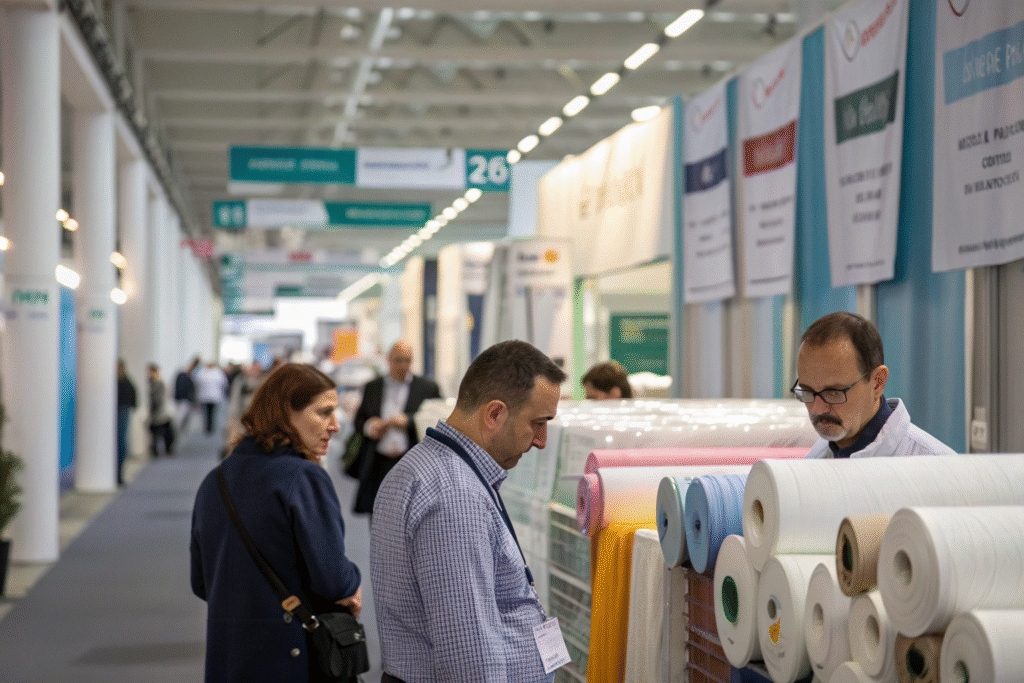
Which trade fairs give me the best ROI?
I see the best hit rate at MEDICA for EU-focused buyers and at CMEF for buyers who want Asia capacity. Venue logistics are simple. You can book meetings in advance. Both shows list exhibitors online. You can prepare by checking exhibitor ISO claims and planning audits.
How do I use online platforms without drowning in data?
Use filters and ask for proof. On Alibaba, filter for medical textiles and ISO 13485. On Global Sources Healthcare, cross-check with SGS or TÜV. You can verify audits with Intertek or SGS before you travel.
How to Verify Biocompatibility and Cleanrooms?
R&D teams ask me one thing most. How do we prove the fabric is safe in the body? The answer is a plan, not a single test. The plan follows ISO 10993. It looks at device category, contact type, and time. It then maps to tests like cytotoxicity, sensitization, irritation, and more. A cleanroom controls upfront bioburden. It makes your sterilization easier.
You can verify implant textile safety by running a biological evaluation plan per ISO 10993, confirming material chemistry, and controlling particle and microbe load with ISO 14644 cleanrooms. This reduces risk of failed submissions and long rework cycles.
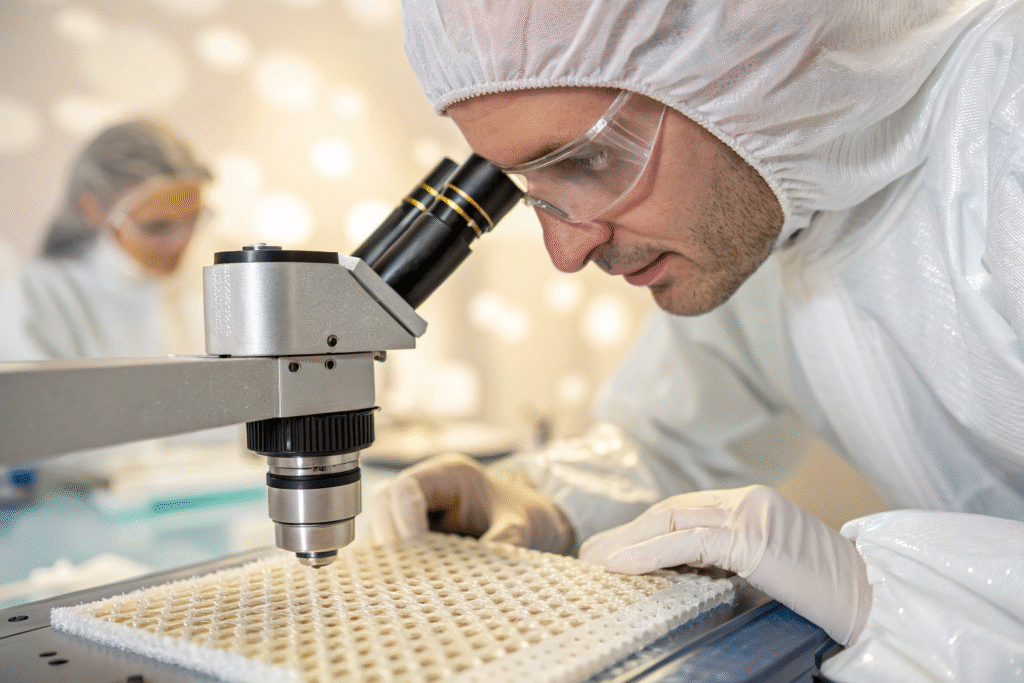
What biocompatibility tests should I run first?
You can start with ISO 10993-1. It guides your biological evaluation. For many meshes and suturable fabrics, you plan cytotoxicity, sensitization, and irritation as a base. You then review chemistry via USP <661> style references and expand as the device demands. You can check general FDA views in the Biological Evaluation guidance.
What cleanroom class do I need?
Class depends on process. Many implant fabrics are made in a controlled area and packed in ISO Class 7 or 8. You can read ISO 14644 and cleanroom monitoring tips at the WHO GMP Annex. You validate air and surfaces. You train staff. You hold people flow simple.
Logistics, Tariffs, and Incoterms for US Imports
Compliance can fail at the border. I have seen clean products stall because a document line was wrong. You can avoid this with a simple plan. You align HS codes, Incoterms, packaging, and carrier notes. You brief your broker and your warehouse. You build slack into the route.
You should manage logistics by choosing HS codes that match implant textiles, confirming any duty relief, and fixing Incoterms that fit your risk. Then you add sterile handling notes, insurance, and route buffers. This keeps your device timeline safe.
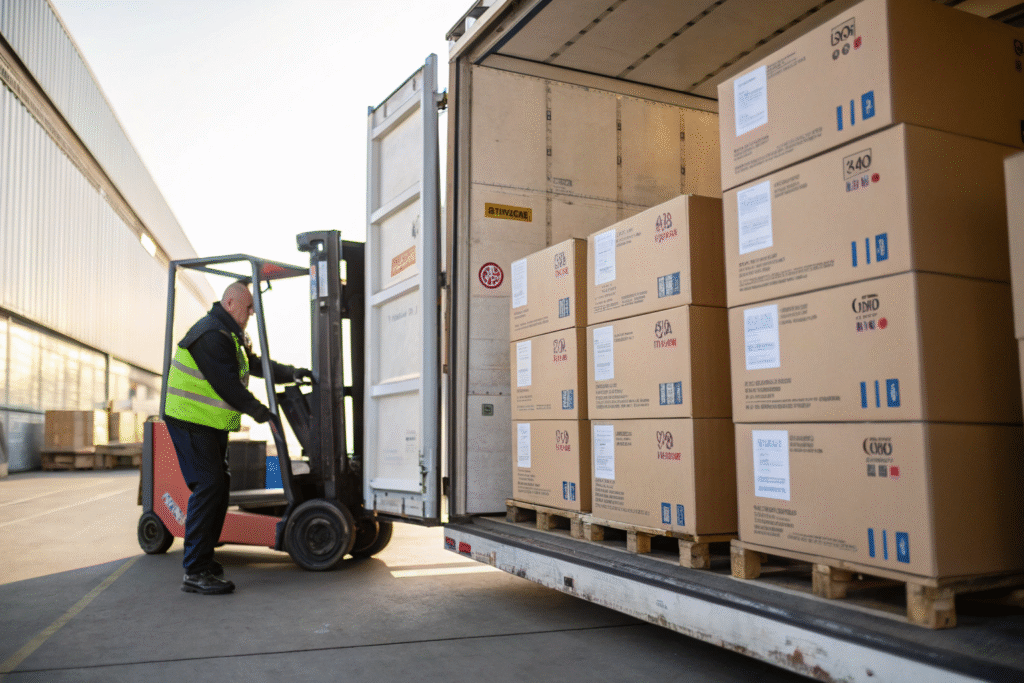
Which Incoterms should I choose for implant textiles?
I prefer CIF or DAP when buyers want simplicity. The supplier handles freight or delivery to your door. If you need control, use FOB and manage the carrier. Read the Incoterms rules from the International Chamber of Commerce. You can also check training notes via Trade.gov.
How do I check U.S. duty rates and compliance?
You can look up duty rates at the U.S. International Trade Commission HTS and confirm medical exemptions on CBP guidance. For Europe, you can search the EU TARIC database. These tools will help you avoid bad surprises.
Conclusion
You can source ISO 13485 certified medical implant textiles with confidence when you follow a clear plan. First, confirm the certificate scope and the issuing body, and test the traceability chain. Second, run a 10993-based evaluation and lock cleanroom controls. Third, fix Incoterms, HS codes, and sterile packaging before you place your PO. At each step, keep documents short and live. Keep tests early. Keep routes buffered. This is how I protect your device timeline and your budget.
If you want an experienced partner in China who can co-create and deliver implant-grade textiles, work with Shanghai Fumao. I will support your R&D and scale-up with fast sampling, clean data, and secure logistics. Contact our Business Director Elaine at elaine@fumaoclothing.com and start your compliant supply chain today.

